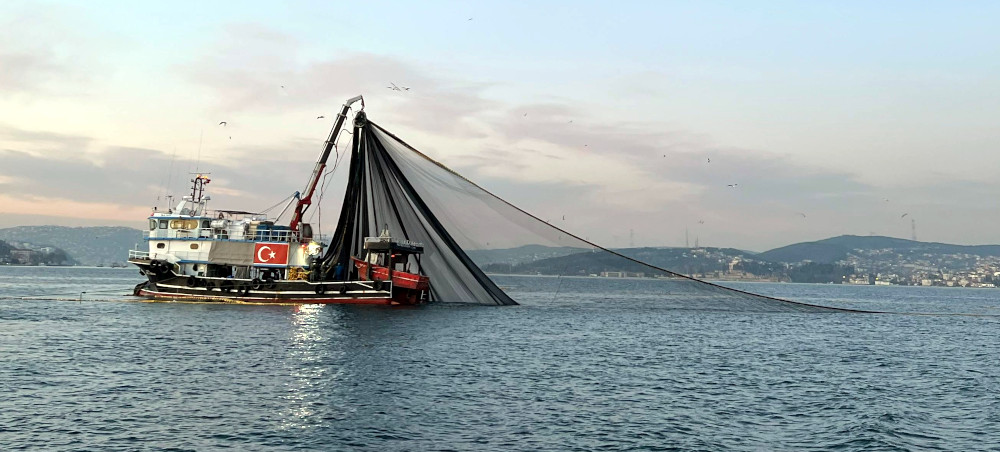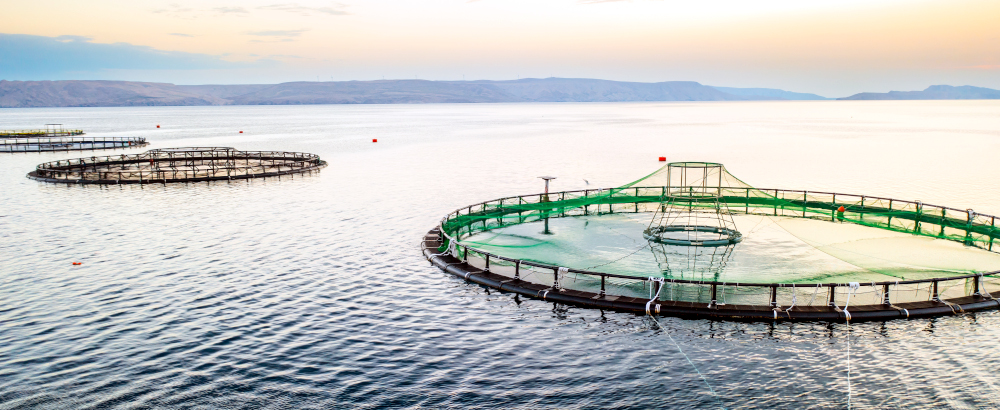SBTN launches first ocean science-based targets for seafood
 Image credit: Muhammed Zeki
Aygur
Image credit: Muhammed Zeki
Aygur
The Science Based Targets Network
(SBTN) has launched the first-ever ocean science-based
targets,
aimed at the seafood industry. This milestone completes SBTN’s initial suite
of science-based targets for
nature
— providing companies and cities with a clear framework for environmental action
across freshwater, land and now oceans.
SBTN builds on the momentum of the Science Based Targets
initiative (SBTi), which focuses
exclusively on corporate climate action. SBTN takes a broader approach,
guiding a wider range of organizations (including cities and governments) to set
science-based targets across issues including water, biodiversity, land and
circular economy practices — focusing on overall environmental impact, not just
emissions.
In 2023, 17 companies
piloted
SBTN’s first iteration of science-based targets for nature, focused on
freshwater and land; later that year, SBTN launched the Cities’ Science-Based
Targets for
Nature program
— aimed at addressing the impact of cities on both climate and other natural
systems. Now, the ocean science-based targets set a new benchmark for corporate
sustainability action across the seafood value chain — helping companies
integrate the latest marine science into their business strategies.
The need for ocean-specific science-based targets
The ocean is the planet’s largest carbon sink — producing most of the world’s
oxygen and absorbing vast amounts of carbon
dioxide
— making it a vital buffer against climate change. Yet, overfishing and habitat
destruction in the name of seafood production have led to increasing
acidification
and degradation of vital marine
ecosystems.
Without urgent action, the stability of marine life and global seafood supply
chains is at risk — and further weakening the ocean’s ability to mitigate
climate change.
A growing wave of innovative seafood
alternatives
aim to give fish stocks a chance to recover, and the seafood industry has made
progress in sustainability through certifications and responsible sourcing
commitments. But as environmental pressures intensify and regulations evolve,
companies must go further. And while frameworks such as the Taskforce on
Nature-related Financial Disclosures (TNFD)
incorporate ocean health metrics into broader environmental standards, they
address ocean health only tangentially, lack specific guidance tailored to
sectoral challenges or lack granularity in addressing specific ocean pressures.
“With the first ocean science-based targets for seafood, companies now have a
globally recognized framework to scale action across land, freshwater and
ocean,” says SBTN Executive Director Erin
Billman. “These targets help
companies move beyond incremental change — strengthening marine ecosystems,
supply chain resilience and long-term viability.”
A standardized, credible approach for business & ocean health
The targets provide a standardized, independently validated framework that
aligns with voluntary and regulatory reporting requirements. Companies setting
these targets can go beyond traditional sustainability commitments to tackle
habitat loss, overfishing and marine biodiversity decline while strengthening
long-term supply chain
resilience.
Developed by World Wildlife
Fund
and Conservation International — with support
from a Steering Committee including the Aquaculture Stewardship
Council, FishWise, the Marine
Stewardship Council, The Nature
Conservancy, Sustainable Fisheries
Partnership and UNEP
FI — these targets can increase the pace and scale of
corporate action.
Addressing key drivers of ocean degradation
The three specific targets for seafood companies each correspond to a
key driver of ocean degradation:
-
The Avoid and Reduce Overexploitation target covers wild fisheries,
helping companies avoid reliance on commodities derived from overexploited
stocks and engage with seascapes and jurisdictions to improve stock health
and reduce overfishing.
-
The Protect Marine Habitats target covers wild fisheries and aquaculture
sites, helping companies avoid and reduce impacts on structural habitats in
marine and transitional environments.
-
The Reduce Risks to ETP Species target addresses impacts to endangered,
threatened and protected (ETP) marine wildlife from wild capture fishing and
aquaculture.
“The targets provide crucial support for seafood companies looking to
future-proof their business, recognizing our dependence on healthy marine
ecosystems to thrive now and in the future,” says Thorbjørn Harkamp, Vice Managing Director at Musholm A/S — the first
aquaculture company to adopt the SBTN framework and one of four seafood
companies (along with Bolton
Foods, Mars
Petcare and
Orkla) to act as pilot companies for the ocean
science-based targets.
Calling all seafood companies
SBTN invites all seafood industry players to:
-
Begin using the
methods:
Read the executive summary and detailed technical guidance, or access tools
prepared by the SBTN Ocean Hub to support your journey.
-
Register
interest
to be among the first movers setting seafood science-based targets.
Report quantifies regenerative aquaculture's economic, climate-changing potential
 Image credit: ali_production
Image credit: ali_production
Speaking of future-proofing seafood, UK-based sustainability consultancy
Tunley Environmental has formed a
strategic partnership with regenerative aquaculture company Algapelago — the
UK’s largest licensed kelp cultivator. The collaboration aims to revolutionize
sustainable ocean farming, focusing on the immense potential of kelp and
mussel farming to combat climate change and support marine biodiversity.
At the heart of the collaboration is Algapelago’s Blue
Forest project — which integrates the
cultivation of sugar kelp and blue mussels to enhance nutrient cycling,
improve water quality and support biodiversity. The project has evaluated the
natural capital value of regenerative aquaculture, and has released a report
offering valuable insight into its potential for fostering sustainable marine
ecosystems and advancing the blue economy.
The
report
— authored by Tunley’s marine biodiversity specialist Dr Nora von
Xylander — provides
insights into the potential of regenerative ocean farming to yield significant
economic benefits while addressing key environmental challenges including
nutrient mitigation, carbon capture and marine ecosystem
restoration.
The research offers proof of concept for the advanced modular cultivation system
set to deploy at Algapelago’s licensed site off the coast of North Devon,
and highlights the ecological and economic benefits of large-scale integrated
cultivation. The system is designed to scale up to 116 hectares — producing
substantial biomass while effectively extracting nitrogen, phosphorus and carbon
from the marine environment.
The study finds that Algapelago’s system will extract between 17.6-21.2 tonnes
of nitrogen, 1.0-1.3 tonnes of phosphate, and 195.9-257.5 tonnes of carbon
annually — proving a valuable tool for improving water quality and combating
nutrient pollution in marine environments.
“The release of this report showcases the nature-positive potential of the whole
Blue Forest project,” says Luke
Ansell, head of operations
for Algapelago. “Major industries have been calling for effective and scalable
nutrient mitigation solutions, so we’re delighted to have a robust baseline to
measure the success of the Blue Forest. We sincerely thank Tunley Environmental
for their support as we build new momentum behind regenerative aquaculture as a
key tool for combatting the causes and impacts of climate change at sea.”
Get the latest insights, trends, and innovations to help position yourself at the forefront of sustainable business leadership—delivered straight to your inbox.
Sustainable Brands Staff
Published Mar 26, 2025 8am EDT / 5am PDT / 12pm GMT / 1pm CET